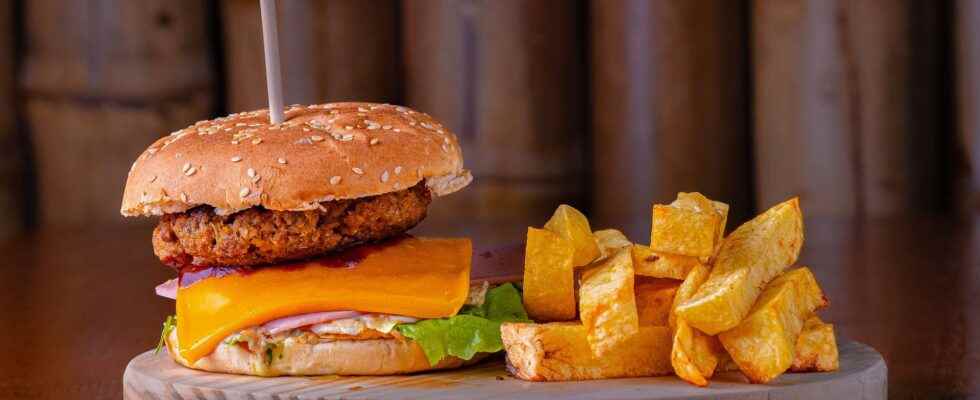While the Japanese are crazy about chicken and chips at Christmas, McDonald’s announces that it is rationing its fries in its 2,900 restaurants in the archipelago: they will only serve small portions during the holiday season! Completely unexpected information for the French. The opportunity to better understand how we eat in the world and the accelerated globalization of tastes and cultures.
You will also be interested
[EN VIDÉO] Modern food: the great advances and failures of half a century Is the food industry feeding us badly? Yes and no, demonstrates Dr. Cocaul, nutritionist and columnist at Futura. Our modern food is abundant and well secured. However, the preparations and packaging are too attractive, while the reinforcement of sugar and salt makes it too rich, causing real epidemics, starting with obesity.
Just because a country is rich doesn’t mean it can feed itself! Countries that have a large population and little arable land cannot feed themselves directly, wealth does not matter.
Japanese peasants cannot feed the Japanese
When countries are rich they may not experience food insecurity, but they still really need a steady supply from other countries. When for one reason or another, the logistics of this supply flu, they experience occasional shortages of certain products. This is currently happening with French fries in Japan.
The 126 million Japanese can only count on 4 million hectares of arable land (or one hectare for 31 people!). While the 67 million French people have 18 million hectares (1 hectare for 3.7 people). Difficult to feed with so few surfaces. Pretty much the only food item the Japanese have a surplus of are fish! Because there, the ocean is immense and their very many trawlers foam, first the Pacific, but well beyond: for example they are very present in front of the coasts of West Africa.
They heavily subsidize their production of rice, staple food if there are any in this country, even if with the westernization of their lifestyles, their consumption has dropped from 120 kilos in 1960 to only 50 kilos today. Their rice growers are very efficient, with average yields of more than 6 tonnes per hectare, they devote to this emblematic activity a third of their arable land (1.5 million hectares), which means that they are almost self-sufficient. On virtually all other productions, they have to rely on their imports.
There are many other countries in this case: for example South Korea, Switzerland, Austria, or Great Britain (I’m not sure that the English who voted for Brexit understood that their peasants cannot feed them …). But these are the rich countries that will always have dollars to buy the food and the situations of Egypt or Bangladesh and many others are much more worrying.
With urbanization, the Japanese way of life has become largely westernized
The Japanese therefore eat two times less rice than in the 1960s (60 kilos per year instead of 120!). They went to bread and potatoes, meat, fats and oils and even dairy products (now almost as much as the French!). Since 2013, they even spend more on bread than on rice! Obviously all these new foods are largely imported. And suddenly, of course, they start to taste the joys of obesity…
One of the signs of this westernization is the very unexpected success of McDonald’s in the archipelago, which now has 2,900 restaurants of this brand (twice as many as in France), for a turnover of 4.6 billion euros. . This adventure began 50 years ago near the American military bases, in particular that of Okinawa. It is also on this island that is located the restaurant which achieves the highest turnover of the 38,000 McDonald’s in the world! Obviously there has been a small adaptation of the firm to local food cultures, for example they offer shrimps, tofu and sauces adapted to local tastes. But, like everywhere else in the world, the Big Mac-cone of fries is a hit! The ingredients are obviously imported, but the price of a menu is significantly lower than in France (5.44 € against 6.10 €).
There is no such thing as trouble-free logistics
In matter of potatoes, Japanese production barely exceeds 2 million tonnes, four times less than French production. They therefore source from exporting countries. And, while doing so, with those who are easier to access for them: the United States and Canada. Ukraine, Poland and France, other exporting countries, are more difficult to reach. While the two largest world producers (China and India) consume all of their production at home.
McDonald’s is by far the largest importer of (frozen) potatoes in Japan, and therefore the first to suffer if supply chains break down. Already, at Christmas 2014, there was a hard strike by dockworkers on the west coast of the United States and the freighters were no longer leaving. They had then not hesitated to bring in 1,000 tons of potatoes by plane, and had put their customers on the diet of the small cone of fries only. It must be said that the end of the year celebrations are a peak period in this country, especially during Covid-19. We thus see very long queues forming in front of each restaurant, particularly via drive, take-out and home deliveries.
In this year 2021, new rationing: the portions of medium and large fries have once again temporarily disappeared. This time because of the catastrophic flooding in western Canada coupled with the decline in the number of truckers and dockers in activity due to the resurgence of the Covid epidemic.
Eventually inevitable logistics hazards when you buy your food 8,000 kilometers from home!
Links for additional info on:
- delays at the Port of Vancouver, https://lnkd.in/dZPbf6hf ;
- supply problems in Canada, https://lnkd.in/dhyZNevF.
Interested in what you just read?
.
fs11
